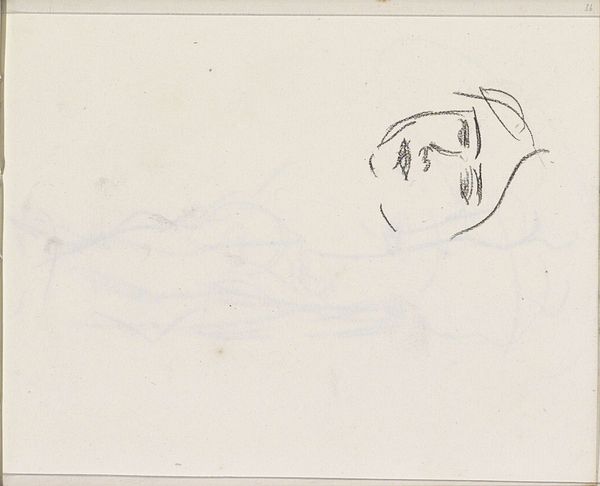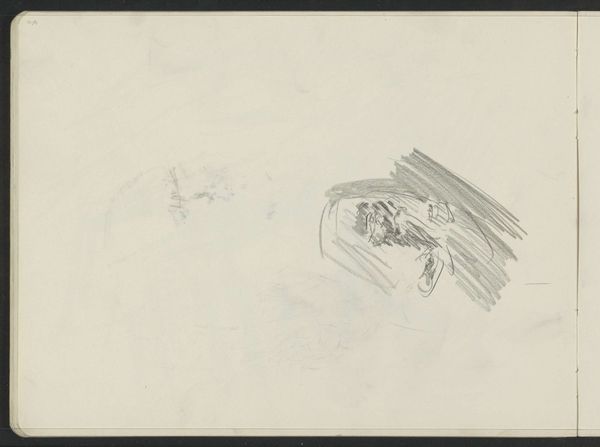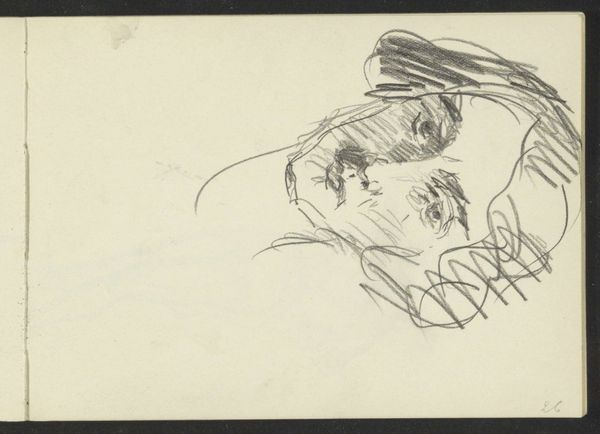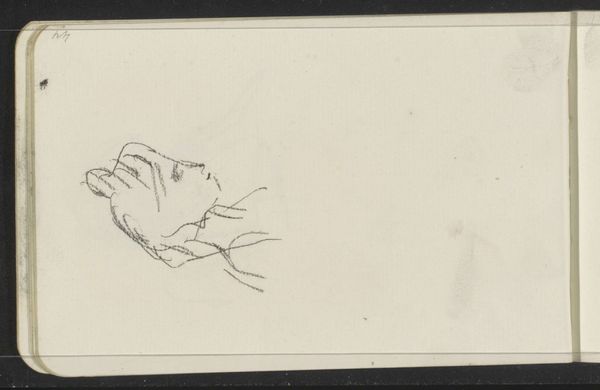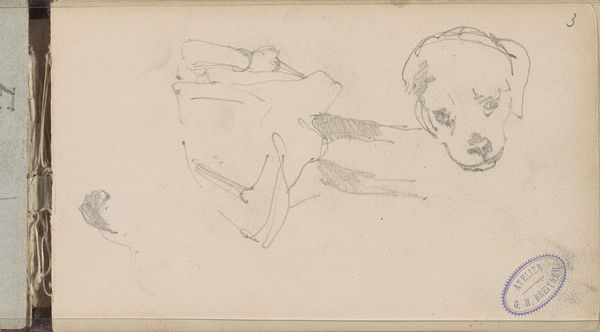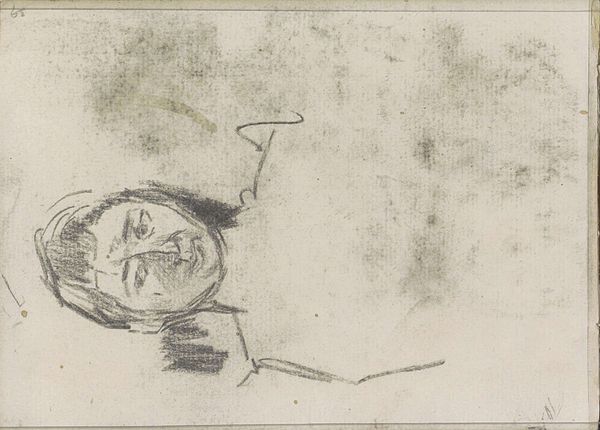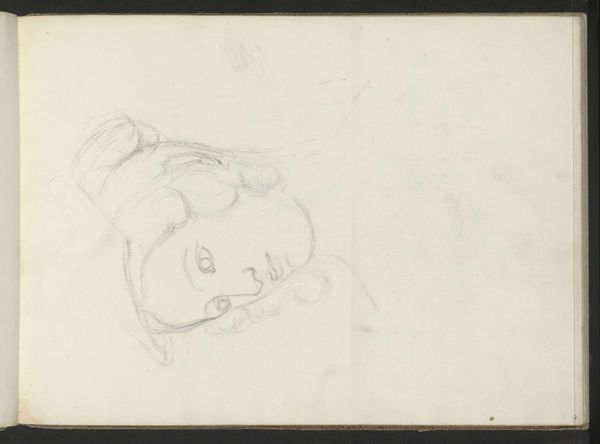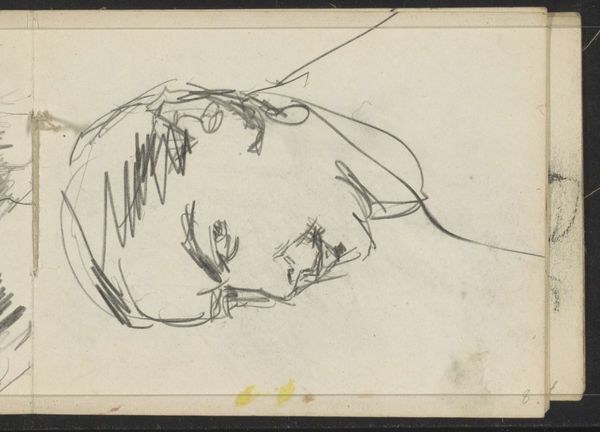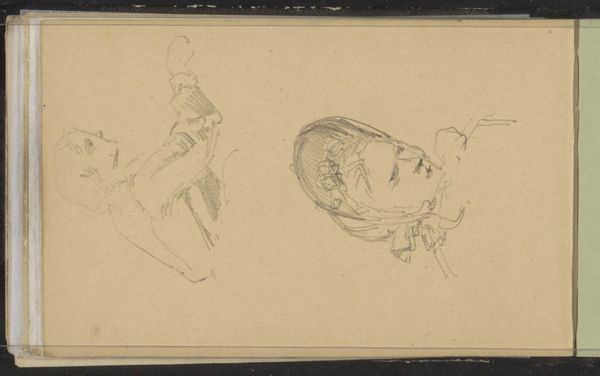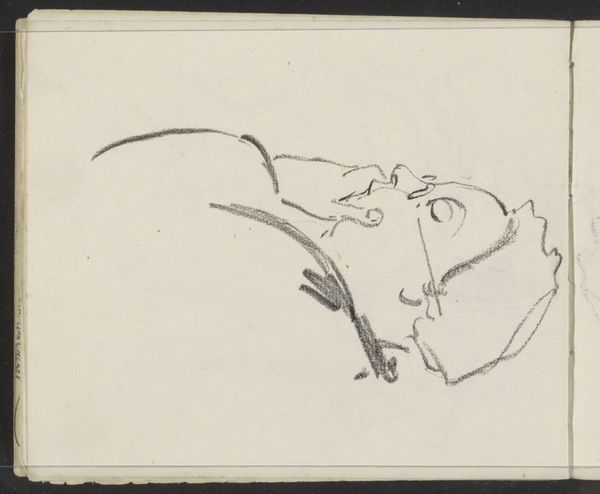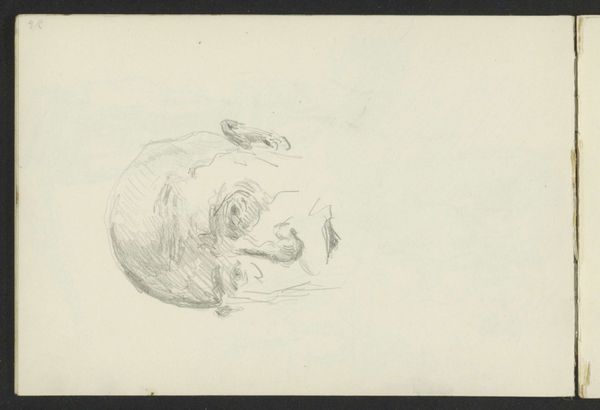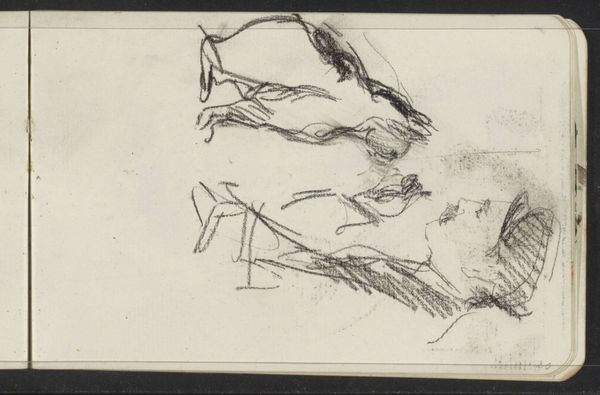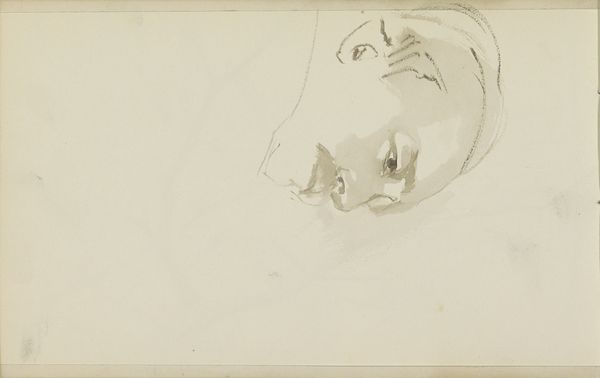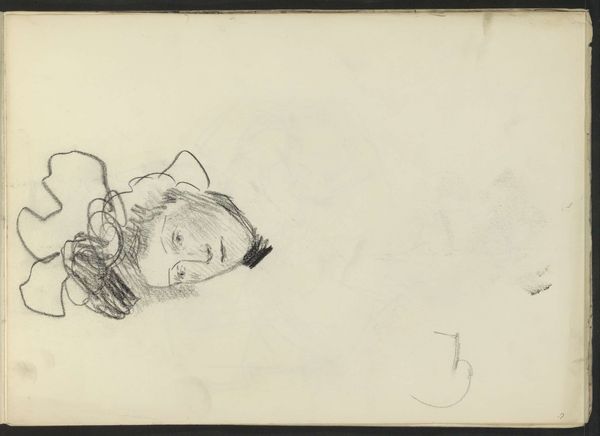
Copyright: Rijks Museum: Open Domain
Editor: So, this is Isaac Israels' "Vrouwenhoofd," created sometime between 1875 and 1934. It’s a pencil drawing, and there's something so immediate about it. Almost like catching a fleeting thought. What do you make of it? Curator: Oh, it's absolutely a whisper, isn't it? Israels was so good at capturing that sense of immediacy, like the scene was alive and moving as he sketched. To me, it feels like he was more interested in the suggestion of the form, the life force within his subject, than a photographic likeness. What pulls you in the most? Editor: Definitely the expression. There's a slight tilt of the head, almost coy, with so few lines. How did he convey so much with so little? Curator: Magic, pure magic! But also, observation, and I think a deep sense of empathy. He wasn't just drawing a woman’s head; he was capturing a feeling, a mood. And see how the sketch is positioned in the notebook – it adds to that intimate, informal feel, almost like we're peeking into his private thoughts. Don't you think it feels a little rebellious, given the rigid portraiture expectations of the time? Editor: Definitely. It’s like a visual note. It feels incomplete, yet it says everything. Curator: Precisely. And that's where the real art lies, isn't it? In that space between what's there and what’s suggested, between reality and interpretation. Editor: I never really thought about it that way, this was so great. Curator: Always a joy to find a new angle!
Comments
No comments
Be the first to comment and join the conversation on the ultimate creative platform.
